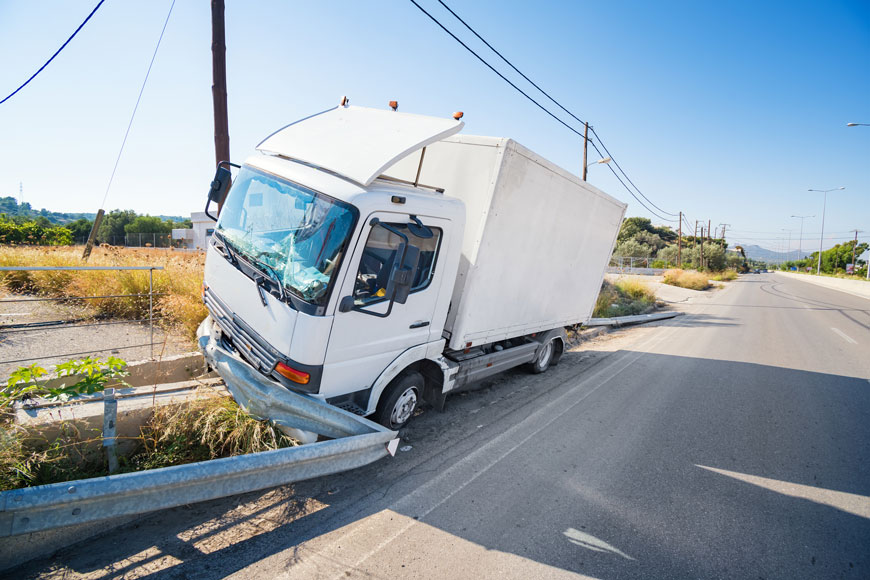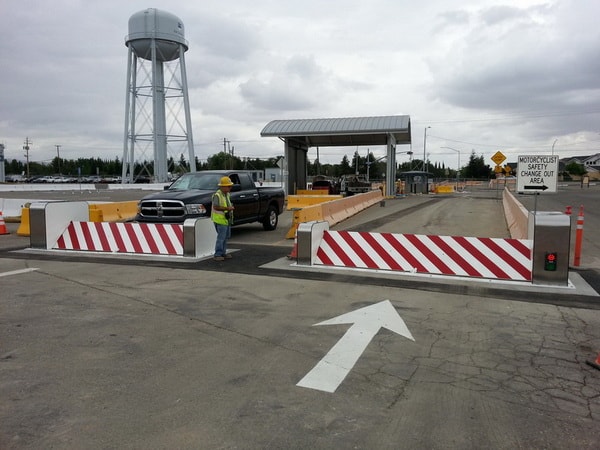The smart Trick of Wedge Barriers That Nobody is Talking About
Wiki Article
The smart Trick of Wedge Barriers That Nobody is Talking About
Table of ContentsThe Of Wedge BarriersMore About Wedge Barriers


The springtime pole 58 is paired to a webcam(e. g., web cam 80 received FIG. 4) of the training mechanism 50. The springtimes 60 disposed regarding the spring pole 58 are kept in compression by spring sustains 62, including a repaired springtime assistance 64. That is, the set spring support 64 is dealt with family member to the structure 14 and the remainder of the bather 10.
Wedge Barriers - The Facts
g., spring support 65 )may be fixed to the end of the spring rod 58 to allow compression of the springtimes 60. As the springtimes 60 are pressed in between the spring supports 62, the spring setting up 54 generates a pressure acting on the web cam coupled to the spring rod 58 in a direction 66. The remaining force applied to the cam webcam deploy release wedge plate 16 may might provided by an electromechanical actuator 84 or other various other. Thus, the spring assembly 54 and the actuator 84(e. g., electromechanical actuator)might run with each other to equate the webcam and raise the wedge plate 16.
As stated over, the springtime setting up 54 puts in a consistent pressure on the webcam, while the electromechanical actuator may be controlled to put in a variable force on the cam, therefore making it possible for the lifting and decreasing( i. e., deploying and withdrawing )of the wedge plate 16. In certain embodiments, the continuous force used by the springtime assembly 54 might be adjustable. g., electromechanical actuator) is handicapped. As will certainly be valued, the spring setting up 54 might be covered and safeguarded from particles or various other components by a cover plate(e. g., cover plate 68 received FIG. 4) that might be significantly flush with the elevated surface 38 of the foundation 14. As discussed over, in the released placement, the wedge plate 16 offers to obstruct gain access to or traveling past the barrier 10. As an example, the barrier check out here 10(e. g., the wedge plate 16 )might block pedestrians or automobiles from accessing a home or pathway. As reviewed over, the obstacle 10 is affixed to the anchor 30 protected within the foundation 14,

front brackets 71. As an outcome, the link assemblies 72 may pivot and revolve to enable the collapse and extension of the linkage settings up 72 throughout retraction and release of the bather 10. The linkage settings up 72 cause movement of the wedge plate 16 to be limited. As an example, if a vehicle is taking a trip towards the deployed wedge plate 16(e. For instance, in one situation, the safety legs 86 may be expanded throughoutupkeep of the obstacle 10. When the safety legs 86 are released, the safety and security legs 86 sustain the weight of the wedge plate 16 versus the surface 12. Consequently, the lifting device 50 may be shut useful site off, serviced, gotten rid of, replaced, etc. FIG. 5 is partial perspective sight of an embodiment of the surface-mounted wedge-style barrier 10, highlighting the camera 80 and the cam surface areas 82 of the training mechanism 50. Specifically, 2 camera surface areas 82, which are described as reduced camera surface areas 83, are placed listed below the cam 80. The reduced camera surfaces 83 may be fixed to the surface area 12 (e. For instance, the lower web cam surfaces 83 and the mounting plate 85 may develop a solitary item that is safeguarded to the support 30 by screws or other mechanical bolts. Furthermore, 2 web cam surfaces 82, which are referred to as top camera surface areas 87, are positioned over the webcam 80 and paired to (e. In other embodiments, interfering layers or plates might be placed in between the surface 12 and the reduced webcam surfaces 83 and/or the wedge plate 16 and the top camera surfaces 87 As pointed out over, the web cam 80 translates along the cam surfaces 82 when the wedge plate 16 is raised from the withdrawed position to the released setting. In addition, as stated above, the springtime assembly 54 (see FIG. 3 )might offer a pressure acting upon the cam 80 in the instructions 102 via spring pole 58, which may lower the pressure the electromechanical actuator 84 is called for to relate to the webcam 80 in order Visit Your URL to actuate and lift the wedge plate 16. 1 )to the released position(see FIG. 4). As shown, the cam 80 consists of track wheels 104(e. g., rollers), which call and equate along the web cam surfaces 82 during operation.
Report this wiki page